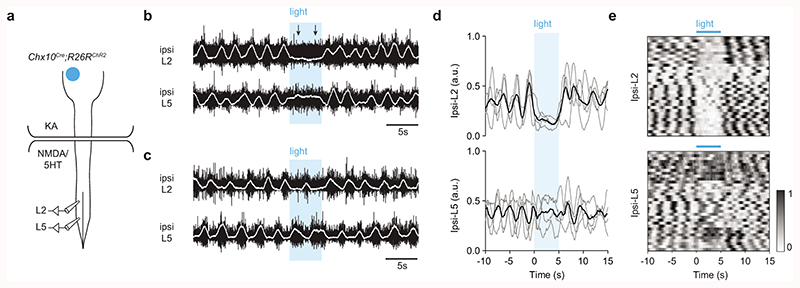Extended Data Fig. 4. Unilateral activation of Chx10 Gi neurons causes inhibition of ipsilateral rhythmic flexor locomotor activity and prolongation of ipsilateral extensor locomotor activity.
a, Schematic of split-bath brainstem-spinal cord preparation from P0-4 Chx10Cre;R26RChR2 mice, as in Fig. 4. Recordings are taken from the ipsilateral L2 (flexor-related) and L5 (extensor-related) ventral roots. b-c, Unilateral photostimulation of Chx10 Gi neurons reduces the frequency (b) and/or the amplitude (c) of locomotor-like flexor activity ipsilateral (ipsi L2) to the stimulation (compare with Fig. 4), with a simultaneous prolongation of extensor-related burst duration (ipsi L5). Traces in (b,c) are derived from two different mice and are representative of n = 4 independent preparations. d, Integrated traces normalized in amplitude from 0-1 and averaged across trials for each mouse (n = 4 mice, grey), with the grand average across mice represented in black. e, 33 trials from 4 mice represented as intensity plots from 0-1, which are integrated traces normalized from 0-1. 3 of the mice represented for ipsi-L2 are also represented in Fig. 4.

